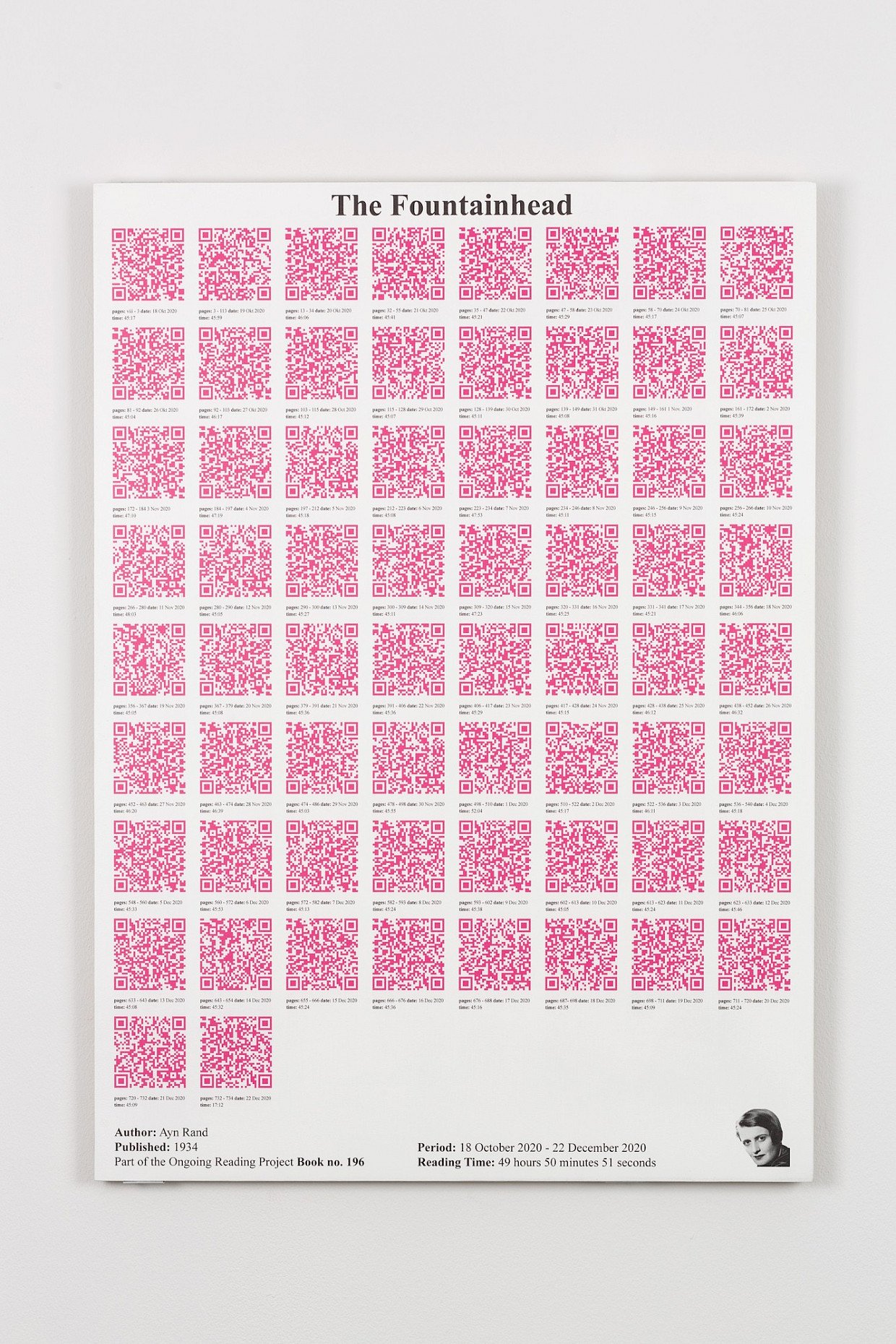

Job Koelewijn (b. 1962)
Untitled (Be more specific)

The Allen & Overy conference room forms the heart of the office. In line with the functionalist vision of Dirk Roosenburg – the architect of the building – this space has become a comfortable spot where clients and employees are updated on various (legal) developments. It is also where regular external and internal office events take place, in which interaction is a key element. Therefore, the green wall stamp with the text “Be more specific” is well placed here.
Job Koelewijn’s stamp Be more specific is one of the many works of art inspired by Baruch Spinoza’s book Ethics. The stamp pad alone is colossal, measuring 140 x 170 cm, purchased by the De Pont Museum in Tilburg. Koelewijn documented that the stamp can be used 12 times altogether. On such occasions, a temporary loan is requested from the museum and the work is transported under the supervision of a curator. The stamp pad is covered with green pigment and Dampo, a menthol-like substance that is used for symptoms of shortness of breath. For Koelewijn (“I smell Dampo, therefore I am”), it is a well-known fragrance that brings back memories from his youth. His asthma-ridden brother was regularly creamed with it.
The words “Be more specific” can be interpreted in several ways. When someone gets bogged down in fuzzy language, making the story impossible to follow during a meeting, another member of the meeting may subtly point towards the wall, the way you used to ostentatiously look at your nails. Spinoza comes into play when we look for Koelewijn’s deeper message. According to Spinoza, ignorance is the main obstacle to the pursuit of a virtuous life. By formulating more accurately, we advance in our thinking process and thus arrive at solutions.
Putting the stamp on the wall in the Apollo House turned into a real performance, with four partners having to provide physical assistance to create a clear print. In 2020, Koelewijn recalled the act of stamping in 2012. However much he stood (and still) stands behind the principles of Spinoza, he now finds it just as important “to be more general”. In today’s day and age, this is the only way for Koelewijn to make a connection with “the other”: creating mutual understanding through broad knowledge and an open mind.

Job Koelewijn (b. 1962)
QR-code panel, Book no. 196

Job Koelewijn reads. Every day he starts with 45 minutes (the length of a cassette tape) of reading aloud. He records the reading and precisely writes down the date, book and pages . His Ongoing Reading Project started on 1 January 2006 and is still ongoing. Koelewijn had to find a mode, because reading aloud for a few days in a row is not really a statement to the world, nor a cathartic experience. It is only through a kind of maniacal continuity that insights and thus art arises for him.
Looking at the writers Koelewijn frequently reads, we see a diverse range of influential intellectuals: Karl Marx, Gertrude Stein, James Joyce, Baudelaire, Susan Sonntag and Spinoza, to name a few. QR code panel, Book no. 196 unlocks Koelewijn’s reading session of Ayn Rand’s The Fountainhead, This book has not left the world unmoved and is at its core a plea for radical artistry. The Fountainhead has been used and abused by large groups of thinkers and followers and, not least, by those on the more conservative spectrum of politics, particularly in the United States. The propagated individualism, or if you like, the egoism of the creator is Ayn Rand’s answer to a limitation of the mind by socialism or collectivism where an artist is in the service of the state or an imposed ideology. That curtailment was the big spectre for Rand, who herself fled Bolshevik Russia in 1926.
Looking at the 20th century, such a rigid and straightforward attitude seems an outdated mode for a society. After all, you are dealing with people who can only thrive with a certain degree of self-determination and freedom. For the individual artist, a radical attitude is potentially a noble aim. It touches upon the myth of the creative spirit that creates art in the studio, undisturbed and without fear, free from financial or socially desirable motives. Well, the term radical certainly applies to the art of Job Koelewijn. No shortcuts or middle roads for him. A work of art must be an experience, preferably sensory, that people will remember for years to come.
QR code panel, Book no. 196 (2022) shows 66 QR codes that give the viewer access to Job Koelewijn’s intimate universe. At a time when audiobooks are slowly taking over from paper, we hear Koelewijn, by no means a professional reader, plowing through the book with a lived voice and a mild Dutch-American accent. Where other artists would paint on canvas, he records his words for us, the art spectator.
The QR code may be here to stay, or perhaps it will be just as outdated in ten years’ time, just like the cassette tapes that Koelewijn used to record his Fountainhead. However the art and Koelewijn’s voice in which we can immerse ourselves will remain. The first QR code is on the speaker at the time of writing this text and after half an hour, the words have an almost hypnotic effect on the consciousness. Koelewijn’s words become images and images merge into each other.